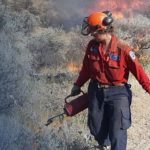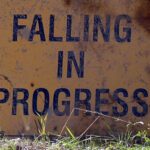Home »

Web reporting tool illustrates health of B.C.’s rivers
In the middle of each month, Danny St. Hilaire puts on his safety vest and drives to a bridge near the Town of Oliver to collect another sample of water from the Okanagan River.
Using a rope, he lowers a tray holding nine small bottles into the rushing water three metres below the bridge. The samples he collects will be sent to a lab to determine how healthy the river is by looking at the physical and chemical components, such as metals, nitrogen and phosphorus.

“Every time we take another water sample, we essentially take a snapshot of the river in time,” said St. Hilaire, a water quality monitoring technician with the Ministry of Environment and Climate Change Strategy. “Knowing what’s out there, what the condition of the water is over a long period of time, helps to see changes and identify any trends that might be occurring.”
With the help of First Nations communities and trained local watershed stewards, the province and federal government jointly conduct water quality monitoring by regularly collecting samples from 42 stations located on 31 rivers throughout the province.
Included among those stations are three on the Columbia River (one in Golden and two in the West Kootenay), two on the Elk River (near Elko and Sparwood) and two on the Kootenay River (near Wardner and Creston).
The results have been available in technical reports, but a new user-friendly web reporting tool has been created to help people learn more about water quality and how it relates to the rivers near them.
Using an interactive map of the province, people can view 10-year water quality trends in certain rivers with data complied from the Canada-B.C. Water Quality Monitoring Program. The program has been in place since 1985. The data is also used to determine the current status of water quality, detect emerging issues that may threaten aquatic life and support the development of guidelines for water, fish and sediment.
“Water quality is a pretty complicated topic,” said Ayisha Yeow, senior water quality monitoring scientist, Environment Canada and Climate Change in B.C. “The new website gives people a glimpse into how we look at the data and we explain what that means. I hope it gets people engaged and learning more about water quality so they can relate it to what they see when they’re enjoying the river.”
According to Yeow, every river is different. They all have complicated systems that are sensitive to a variety of stressors, such as human development and climate change. The Chilcotin River monitoring site has seen some of the biggest changes – an increase in metal concentrations, even though there is not much development in the area. Scientists are investigating what exactly is driving that change, but an increase in sediments due to changes in streamflow may be a factor.
“As British Columbians, we are very fortunate to have plentiful and pristine freshwater resources. However, I don’t think we should take that for granted,” said Lucie Thomson, unit head for ambient surface water quality monitoring, Ministry of Environment and Climate Change Strategy. “We have over 30 years of information, which is very important for understanding current conditions, changes in our freshwater ecosystems and the potential sources of those changes. It helps form policy and is the basis for water stewardship.”
Lead image: Kootenay River northwest of Wardner. e-KNOW file photo
e-KNOW







